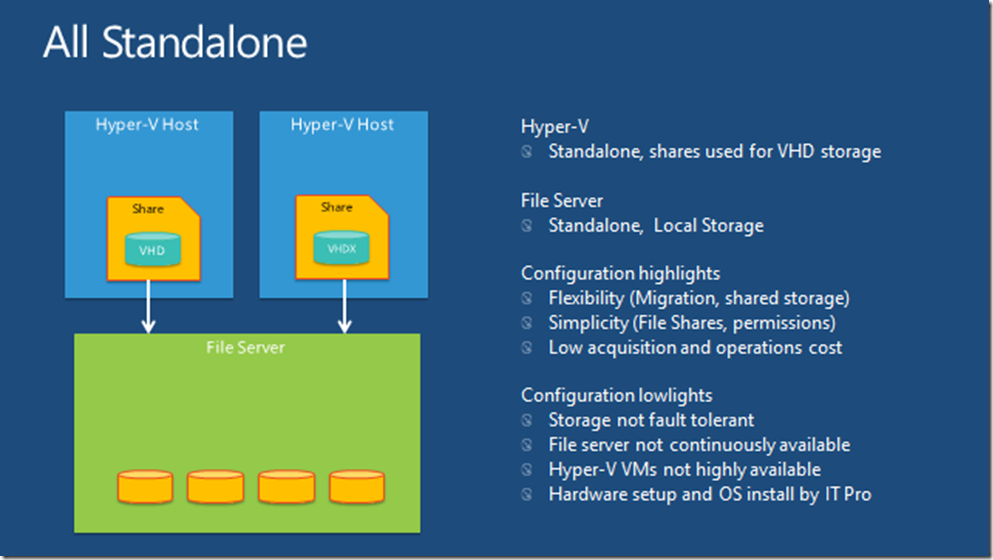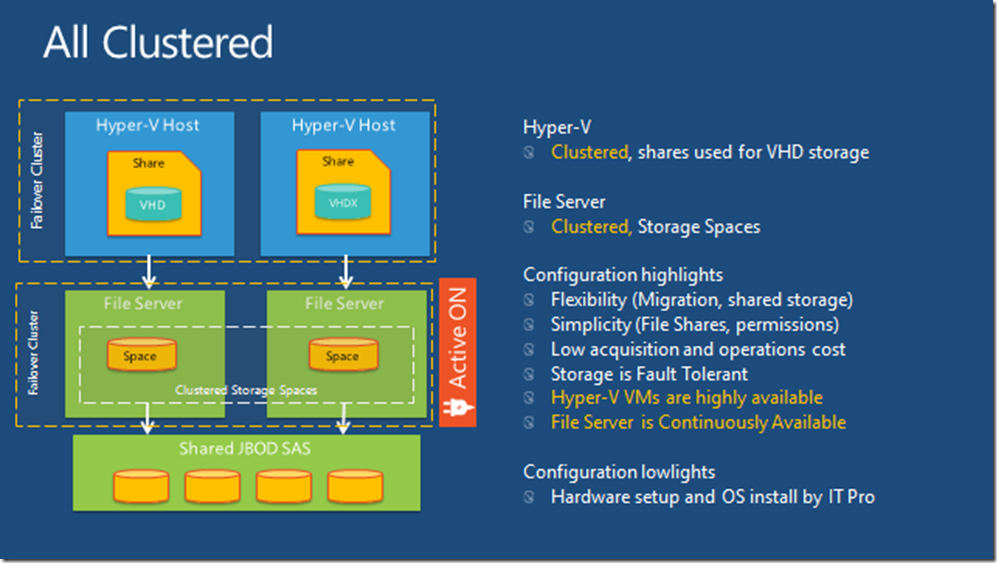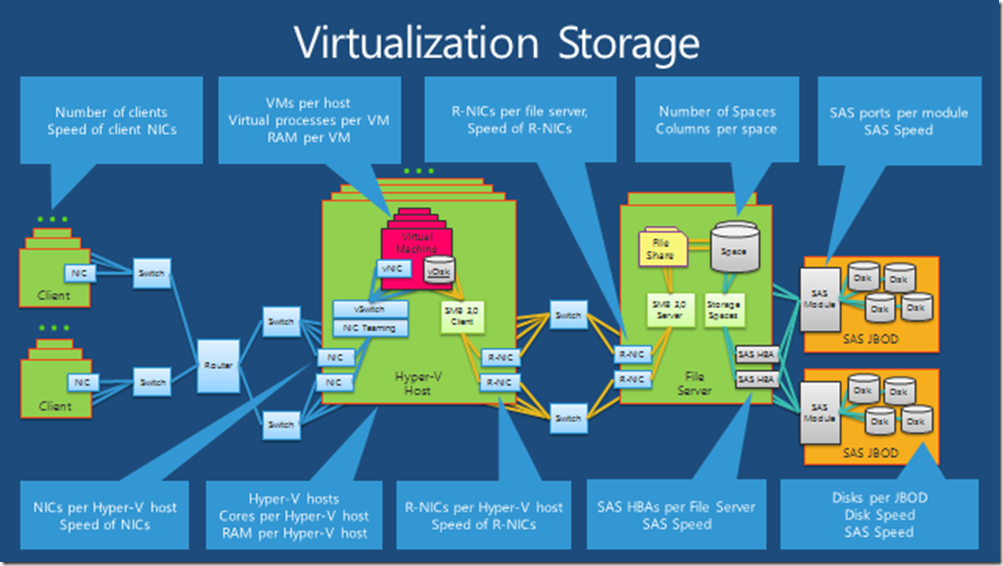Virtualization Storage–SMB (20+ Days of Server Virtualization - Part 6 of 20)
As we move through the 20+Days of Server Virtualization Series, the next topic we’re covering is Virtualization Storage – SMB. Server Message Block or “SMB” is the protocol used by Windows Clients and Windows Servers to communicate as this protocol is embedded in a TCP/IP packet by Windows machines. Server Message Block (SMB) has gone through a number of revisions in the earlier editions of Windows on the server and client side but the version 3.0 of SMB included in Windows Server 2012 has gone through a significant update which adds many features and architectural design options for an IT infrastructure that may come as a surprise. I’ve been outlining many of these features with Jose Barreto on the Windows Server team in a TechNet Radio series named the SMB3 Series. You can find the entire SMB3 series at https://aka.ms/SMB3Series.
Among the many feature updates in Windows Server 2012 SMB 3.0, the Virtualization Storage option for SMB comes from the use of a remote file share located on a second Windows Server 2012 File Server to provide an “SMB File share” where remote workloads such as Hyper-V over SMB or SQL Server over SMB can be hosted like they were a local workload. When creating a Hyper-V virtual machine, the storage location of the Virtual Hard Disk or .VHD files would be placed on the SMB File share which appears local to the Hyper-V host, but is actually stored across the network on the remote file server.
The above diagram shows a basic configuration of leveraging Hyper-V over SMB which would be an option for a small business or in a test lab to begin to understand how to use this new feature set included with Windows Server 2012. For customers requiring a more highly available, fault tolerant configuration, virtualization storage could be configured in conjunction with Windows Server 2012 failover clustering and clustered storage spaces to create an extremely low cost and redundant solution.
Now I know what you may be thinking, placing virtualization storage over an SMB file share is going to introduce a performance bottleneck and latency that will make virtualization storage over SMB unsavory. Well, think again. We commissioned a study to document the performance characteristics of Windows Server 2012 Storage and Networking which included comparing the performance between a Hyper-V workload hosted locally on a Hyper-V host versus a Hyper-V workload hosted over SMB File share. The performance of the two solutions were nearly identical, even at scale with several thousand users. The TechNet Radio episode discussing these findings can be found here and the results of the study can be found here.
To further document what a typical enterprise deployment of a highly redundant and high performance virtualization storage workload may look like, see the below diagram.
This configuration leverages a number of hardware and software options to make a complete virtualization storage solution with no single point of failure. Keep in mind that this solution is showing the physical storage of SAS JBOD to show an extremely fast, yet low cost storage platform, but you could substitute any number of storage platforms at that point of the solution (iSCSI, Direct Attached, Fiber Channel, etc.)
Enjoy!


